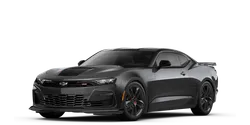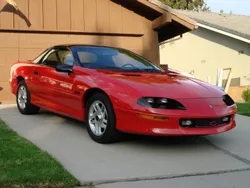

Chevrolet Camaro Generation 4 Facelift 1998 Overview
Explore the Chevrolet Camaro generation details, focusing on the 1998 facelift. Discover its features and specifications to understand this iconic model.
In 1998, Chevrolet's iconic muscle car, the Camaro, received a facelift for its fourth generation. This facelift brought some exciting changes to the Camaro, both in terms of design...
Technical Specifications
Select Version
Dimensions
Engine
Driving
Others
History and Features
Mycarro AI
Feb 1, 2024
Introduction
In 1998, Chevrolet's iconic muscle car, the Camaro, received a facelift for its fourth generation. This facelift brought some exciting changes to the Camaro, both in terms of design and performance. The fourth-generation Camaro had already made a strong impression since its launch in 1993, and the facelift aimed to further enhance its appeal.
Exterior Design
The exterior of the fourth-generation Camaro received a significant update in 1998. The front fascia was restyled and featured a more aggressive and modern design. The headlights were reshaped, giving the car a sleeker and more aerodynamic look. The front grille was also revised, incorporating a honeycomb pattern that added to the car's sporty image. At the rear, the taillights were updated with a more angular and eye-catching design. These changes added a fresh and contemporary touch to the Camaro's already iconic silhouette.
Interior Upgrades
The interior of the Camaro also received some notable upgrades in 1998. The dashboard was redesigned with a more driver-centric layout, placing all the essential controls within easy reach. The materials used in the interior were improved, enhancing the overall quality and feel of the cabin. The seats were redesigned to provide better support and comfort, especially during spirited driving. Additionally, new options and features were introduced, such as a premium sound system and upgraded upholstery choices, allowing buyers to customize their Camaro to their preferences.
Performance Enhancements
Under the hood, Chevrolet offered a range of powerful engine options for the fourth-generation Camaro facelift. The base engine was a 3.8-liter V6, which provided a respectable balance of performance and fuel efficiency. However, enthusiasts were particularly drawn to the high-performance variants. The Camaro Z28, for example, was equipped with a 5.7-liter V8 engine that produced an impressive 305 horsepower. This power allowed the Camaro to accelerate from 0 to 60 mph in just under six seconds, making it a force to be reckoned with on the road.
Driving Experience
The driving experience of the Chevrolet Camaro Generation 4 facelift was exhilarating. The car's powerful engine options, paired with its responsive handling and precise steering, made it a thrill to drive. Whether on a racetrack or on the open road, the Camaro delivered a dynamic and engaging experience. The suspension was tuned to provide a balance between sporty handling and everyday comfort, allowing drivers to enjoy long drives without sacrificing performance.
Legacy and Impact
The facelifted fourth-generation Chevrolet Camaro left a lasting impact on the automotive industry. Its sleek design and powerful performance contributed to the ongoing popularity of the Camaro nameplate. The Camaro became a symbol of American muscle cars, capturing the imagination of enthusiasts worldwide. Even today, the Camaro Generation 4 facelift is hailed as a true classic, a testament to Chevrolet's commitment to creating thrilling and timeless vehicles.
Conclusion
The Chevrolet Camaro Generation 4 facelift of 1998 was a pivotal moment in the Camaro's history. The exterior updates gave the car a more aggressive and contemporary appearance, while the interior upgrades added comfort and sophistication. Under the hood, powerful engine options ensured exhilarating performance. The driving experience was enhanced by the Camaro's responsive handling and precise steering. Overall, this facelifted generation of the Camaro left a lasting legacy and solidified the model's reputation as a true American muscle car.
